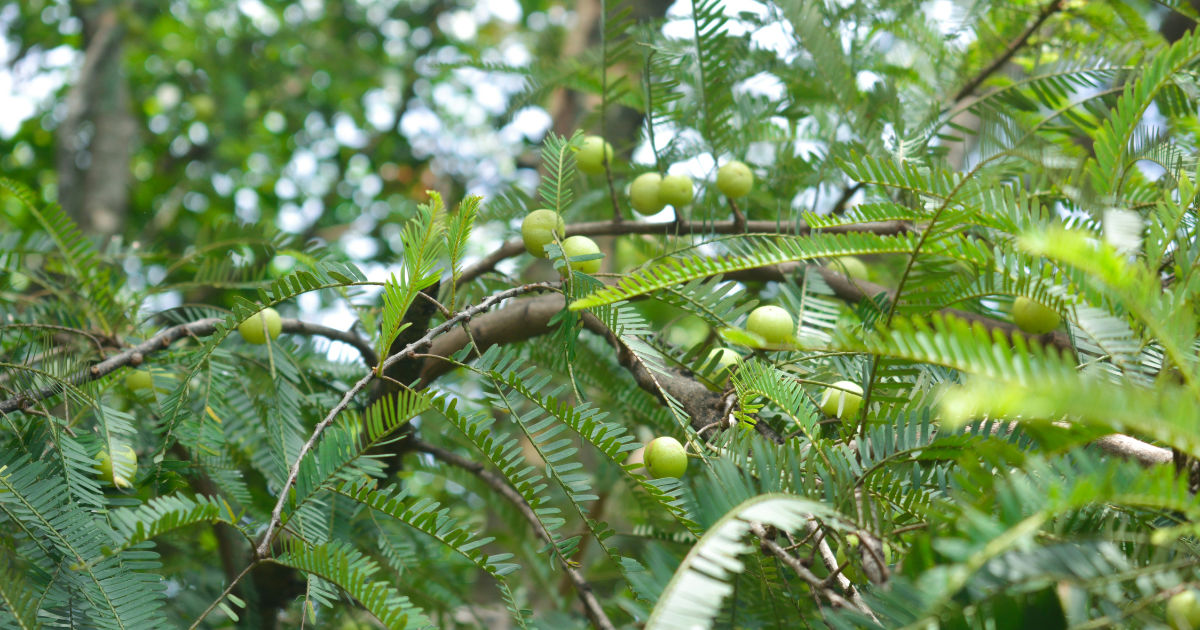Amalaka berry is opaque when it is unripe and then turns translucent when it is ripe. It is one of the three key ingredients in Ayurvedic medicine. The meaning of Hastamalaka is goose berry in my hand. Amalaka means an amla-berry (sour fruit) and hasta is hand.
Shankaracharya used this berry to describe his disciple Hastamalka’s wisdom and clarity. Hastamalaka was seven years old when he narrated these twelve verses in response to a question from Shankaracharya. Hastamalaka name was given to him by Sankara. Sankara visited a famous temple by the name of Mookambika and visited the village of Sri Bali.
In Sri Bali lived a learned brahman called Prabhakara. He had only one child who was dumb. Prabhakara decided to take his son to visit Sankara and he hoped that his blessings would cure his child. Both father and son, prostrated themselves on the ground. Prabhakara got up but his son remained on the ground. Sankara lifted the boy from the ground and then Prabhakara said that his son was dumb and an idiot. He is clueless about what to do.
Sankara asked the boy, who he was and was he an inert object. The boy replied that he was aware and free from the six waves (hunger, thirst, grief, delusion, old age and death) and free from the six stages (birth, existence, growth, change, decay and destruction). The boy then explained the Vedas in a nutshell in twelve verses. He was spiritually enlightened and was given the name Hastamalikayam. The knowledge was as clear to him as the amla (gooseberry) in his hand. Sankara told the father that this boy knows the truth and he should let his son accompany him.
How did Hastamalikiyam become like this?
When he was two years old, his mother had taken him to the river. She had gone for her bath and had left the child with a Rishi, who happened to be sitting on the bank of the river. The Rishi was deep in meditation, and the child fell into the river and died. Th mother was heartbroken, the Rishi was moved by her distress and by virtue of his powers, entered the dead child’s body and the boy attained self-realization.
Sankara refers to Hastamalaka as the Acharya and he wrote an elaborate commentary on it.
When he asked Hastamalaka, who he was, he replied:
I am the form of true knowledge. The sun is the symbolic cause of all activities of the senses. The sky is beyond all activities. I am the form of the soul, which is immortal. I am that form of the soul aiming to achieve Jnana.
The shining image of the face that you are seeing in the mirror, does not have any existence separate from the face itself, and the self-reflected in our mind does not have a separate existence from God. I am that form of that soul aiming to achieve Jnana.
The face exists without any reflection, without intellect, awareness remains. I am that form that is not approachable to mind and eyes.
He who appears as consciousness of different bodies is me, that form of soul aiming to achieve Jnana. I am that intellect which illuminates many together.
I am the truth that illuminates the sun himself. To the unsteady intellect, one soul appears to be many.
A man whose sight is covered by ignorance, thinks that he is in bondage. I am like the pure nature of the sky. Persons differ in intellect, and it is like the waxing and waning of the moon.
Dear ones, these verses are a description of the nature of the higher self. The higher self has no relation to the body-sense-mind complex. One has to understand the higher nature of the self and then the relationship between I and Brahman becomes clear. It is the unchanging truth beyond space, time and causation. I would say that Vedanta teaches one that manifestation of one’s divinity is the goal in life.
Aim Hrim Klim
Photo by Dileesh Kumar on Unsplash

